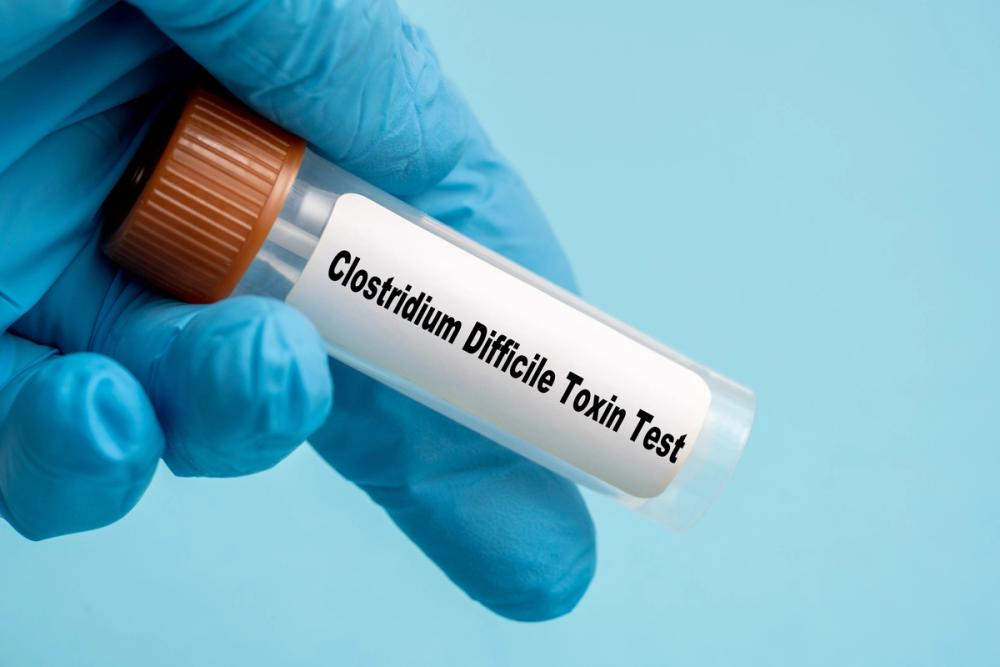Article
Here Are 4 Things to Know About C. Difficile
Author(s):
The infection causes diarrhea and inflammation of the colon, and it can be difficult to get rid of it.
Bacteria or germs are present all around us in our everyday lives.
Credit: luchschenF - stock.adobe.com

Sometimes the body can fight off these foreign bodies without us even realizing it, thanks to our natural defense systems, such as the immune system and skin.1 The skin is the first line of defense when it comes to fighting infection, as it protects these bacteria from easily entering the body, while also being the home to protective bacteria, such as like S. epidermis.2
C.diff causes diarrhea and inflammation of the colon, and it is difficult to treat.3
An infection with C.diff is more likely to occur in those who are aged 65 years or older, are hospitalized, are in a nursing home, have recently taken antibiotics, or have weakened immune systems.3 Antibiotic help get rid of bacteria, but they end up killing both good and bad bacteria.4
The longer an individual takes an antibiotic the greater the risk of developing C.diff. Antibiotics are typically not used for long periods. Most bacteria can be eradicated with a short 5-to-7-day course of antibiotics. However, sometimes treatment time can be for 2 weeks or sometimes even for months. Taking an antibiotic for more than 7 days increases the risk of developing C.diff, as the effects of antibiotics can potentially last several months.
Antibiotics can cause C.diff, but they are also used to eradicate it.
Although taking antibiotics can increase the risk of contracting C.diff, some antibiotics are specifically used to treat C.diff. Medication treatment varies depending on whether the C.diff infection is an initial or recurrent episode.5
Initial treatment can be with fidaxomicin, metronidazole, or vancomycin.The typical dosing of these medications is5:
- Fidaxomicin 200 mg orally twice daily for 10 days
- Metronidazole 500 mg orally 3 times daily for 10 to 14 days
- Vancomycin 125 mg orally 4 times daily for 10 days
Metronidazole will be the most cost-effective medication and is typically covered by all insurance plans and readily available at most pharmacies for those who want to fill their prescriptions same day.
C.diff is considered recurrent if a patient’s symptoms resolve while on medication but return within 2 months after stopping it.5 The treatment of recurrent C.diff infections depends on how many times it has occurred. The recommended treatment option for a patient’s first or second recurrence is fidaxomicin. The recommended treatment option for the third C.diff episode is fecal microbiota transplantation (FMT).
Recurrent C.diff episodes may require intravenous (IV) medication. Health care provider may suggest treatment with Zinplava (bezlotoxumab) for C.diff infections within the past 6 months. Zinplava is to be used in addition to a standard antibiotic regimen and is administered as an IV infusion over 60 minutes.6 Zinplava likely requires a prior authorization initiated by a health care provider before a patientcan receive the medication.
Strangely, a patient may need to borrow healthy poop from a stranger.
Usually it is frowned upon to come into contact with another individual’s fecal matter, but when it comes to C.diff that is hard to treat it may be a viable option. The technical term is a fecal microbiota transplantation (FMT), and this is usually reserved for patients who have third or subsequent infections.5
A patient receiving FMT may require 2 sequential administrations, which can help restore the missing strains of good bacteria and help break the cycle of recurrent C.diff infections.6 Not all individuals with recurrent C.diff infections are candidates for FMT, including patients who are immunocompromised and those with inflammatory bowel disease.6
FMT can be administered via alower- or upper-gastrointestinal-tract procedure or oral capsules. The route of delivery depends on many factors, including availability of expertise and resources, cost, and patient preference and risks.6
References
1. Skin microbes and the immune response. National Institutes of Health.Updated January 26, 2015. Accessed February 10, 2023. https://www.nih.gov/news-events/nih-research-matters/skin-microbes-immune-response
2. Compound produced by bacteria protects the skin. National Institutes of Health. Updated March 1, 2022. Accessed February 10, 2023.
https://www.nih.gov/news-events/nih-research-matters/compound-produced-bacteria-protects-skin
3. What is C. diff?CDC. Updated September 7, 2022. Accessed February 15, 2023. https://www.cdc.gov/cdiff/what-is.html
4. Your risk of C. diff? CDC.Updated June 27, 2022. Accessed February 15, 2023. https://www.cdc.gov/cdiff/risk.html
5. Kelly C, Lamont J, Bakken, J. Clostridioides difficile infection in adults: treatment and prevention. In: Bogorodskaya M, ed. UpToDate. 2023. Accessed March 2, 2023. www.uptodate.com
6. Dosing and Administration of Zinplava (bezlotoxumab). 2023. Accessed March 3, 2023. https://www.merckconnect.com/zinplava/dosing-administration/
7. Borody T, Ramrakha S, Fecal Microbiota transplantation for treatment of Clostridiodes difficle infection. In: Bogorodskaya M, ed. UpToDate. 2023. Accessed March 2, 2023. www.uptodate.com.






